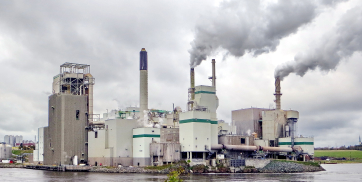Companies commit to the Oil & Gas Methane Partnership 2.0
We are moving toward a world with increased transparency, where data reported will come directly from continuous monitoring and field measurements. On Monday, 62 oil and gas companies committed to reporting their methane emissions as part of the Oil & Gas Methane Partnership (OGMP v2.0 ). The companies are mostly from Europe, and are comprised of smaller firms as well as larger ones such as BP and Shell. More details about their reduction targets and OGMP v2.0 here and here.
Spartan roundtable discussion event
Spartan Controls, in conjunction with Highwood Emissions Management, is hosting a roundtable discussion of how companies can benefit from incentive funding opportunities such as:
– MTIP (Methane Technology Implementation Plan) – $25 million
– PTAC MCP (Methane Consortia Program) – LCO Crossfire
– NRCan ERF (Emission Reduction Fund) – $225 Million
– ERA – Shovel Ready Challenge – $150M
– CRIN (Clean Resource Innovation Network) – $80M
Contact Spartan Controls or Highwood Emissions Management for additional questions.
The Environmental Defense Fund receives $100 million grant
The Bezos Earth fund bestowed a $100 million grant to the Environmental Defense Fund (EDF). The grant will help launch a satellite that will track and measure methane pollution globally, work on providing public access to data, and advance scientific understanding of nature-based processes of carbon storage and removal.
Sign up for the CERI Methane Emissions Management (MEM) course
For those looking to supplement their knowledge in emissions management, consider taking the CERI Methane Emissions Management (MEM) course. The course commences on January 21, 2021 and is presented by Mr. Allan Fogwill. MEM is offered by the Canadian Energy Research Institute, in partnership with JWN Energy and the Daily Oil Bulletin. Sign up here.
New Research Publications
Manoj K. Nambiar, Françoise R. Robe, Alison M. Seguin, Matthew Endsin, and Amir A. Aliabadi
The mining sector is known to contribute a significant amount of greenhouse gas emissions. Simulations of spring and winter conditions were conducted in an open-pit mine and a tailings pond. Researchers found that on average, winter total advective flux was significantly lower than springtime total advective flux. Daytime and nighttime conditions greatly varied in the spring. This research is helpful in understanding the difficulties in recording methane emissions from complex terrain.
Investigating large methane enhancements in the U.S. San Juan Basin
Gabrielle Pétron, Benjamin Miller, Bruce Vaughn, Eryka Thorley, Jonathan Kofler, Ingrid Mielke-Maday, Owen Sherwood, Edward Dlugokencky, Bradley Hall, Stefan Schwietzke, Steven Conley, Jeff Peischl, Patricia Lang, Eric Moglia, Molly Crotwell, Andrew Crotwell, Colm Sweeney, Tim Newberger, Sonja Wolter, Duane Kitzis, Laura Bianco, Clark King, Timothy Coleman, Allen White, Michael Rhodes, Pieter Tans, and Russell Schnell
In 2014, researchers used a satellite-based map of the United States to single out the San Juan Basin as its biggest methane emissions emitter hotspot. In 2015, a study was conducted to identify exactly where the methane and ethane were coming from. Satellite measurements were investigated using both ground (vehicle) and aerial (aircraft) measurements. The study found identified that most methane and ethane in New Mexico originated from natural gas and coal bed methane.




